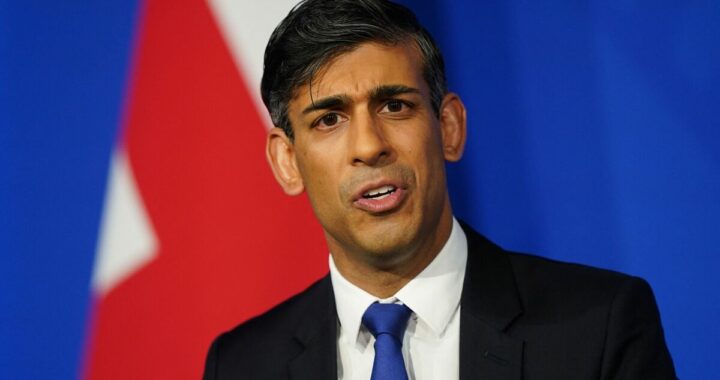Opinion | The Case for Ending Free Parking
5 min read
People waste time and gasoline cruising for free on-street parking. Some put chairs or traffic cones out to mark spots that they claim as their own. Fights over spots have ended in homicide. Delivery vans double-park because there’s no room on the curb. Garbage bags fill sidewalks because, again, there’s no room on the curb.
The parking problem has an economic origin and an economic solution, which is why I’m writing about it. (Not to win an argument with my wife, who insists on cruising for a spot on the street when I prefer to give up and park in a garage.)
The origin of the parking problem is that on-street parking is free or underpriced. The solution is to charge or charge more. The ideal amount to charge is whatever it takes to reduce demand such that most of the spots on a block are used but there’s usually one or two available for drivers who come along and need to park.
This isn’t a new idea. What is new is that it’s being embraced by cities around the world. Cities that have begun to charge market prices for on-street parking include Baltimore; Boston; Calgary, Alberta; Los Angeles; Mexico City; Milwaukee; Pittsburgh; San Francisco; Seattle; and Washington, D.C. (But not, ahem, New York City, where 97 percent of its three million curb spaces are unmetered.) More city leaders and ordinary citizens are rejecting the conventional wisdom that free parking on the curb is some kind of inalienable right. Better yet, they’re coming up with politically achievable ways to change things.
To learn more about the latest thinking, I interviewed Donald Shoup, an urban planning professor at U.C.L.A. and the unofficial national dean of parking, and I read an entertaining book on the topic, “Paved Paradise: How Parking Explains the World” (2023), by the journalist Henry Grabar. I also read pieces from Bloomberg’s CityLab, the economics blogger Joseph Politano and the Federal Highway Administration, among other sources.
A 2005 book by Shoup, “The High Cost of Free Parking,” recommended using parking meter revenue to improve public services on the blocks where the meters are as a way to build local support for them. It also recommended removing requirements for new residential or commercial buildings to supply certain amounts of off-street parking. Those legal minimums have the unintended — or sometimes intended — effect of discouraging the construction of affordable housing.
Shoup likes to point out that the car-width strips of land on the sides of streets are an immensely valuable asset that is handed out by cities free, but on one condition: You have to use it to store your car while you aren’t driving it. “Street parking is theft” is the mantra of Shoupistas, as disciples of Shoup call themselves.
Shoup has a bachelor’s degree in electrical engineering (1961) and a doctorate in economics (1968), both from Yale. I asked him how his economics training drew him to parking. He tried to get me off the topic, thinking that readers would be more interested in the practicalities of changing parking rules, but I pressed him. He told me his thinking was shaped by Yale’s James Tobin, who went on to win a Nobel in economic science, for whom Shoup worked as a teaching assistant.
“Parking spots are the most frequently rented piece of land,” Shoup told me. “It’s a spot market. To think that there’s a spot market in land and it works so badly. It ought to be, like, a very functional spot market.”
“The key to success in urban planning is to get the prices right for everything,” Shoup added, channeling Tobin. He said he was also impressed by the Harvard economist John Kenneth Galbraith, who condemned “private opulence and public squalor.” Money raised by charging for parking can tap private opulence to reduce public squalor, Shoup said.
Defenders of free curb parking say charging would hurt lower-income drivers. That’s true in certain cases. On average, though, people with one or more cars have more money than people who don’t have cars. Plus, some of the revenue from the meters could go to help lower-income drivers pay for public transportation — which would have the side benefit of improving the quality and frequency of subways and buses.
Another objection is that charging for parking would push retail business to the suburbs, where parking would be more likely to remain free. Again, true in certain cases. But not charging means that nearly every space downtown is filled nearly all the time. Not being able to park at all discourages shoppers even more than a meter would. The alternative to using price to ration spots is to put so much parking space around buildings that street fronts look like a hockey player’s smile: lots of missing teeth.
This March, The Journal of Planning Education and Research published an article by Shoup that made the case for so-called parking benefit districts. (Something he also wrote about for The Times in 2018.) The districts are zones of cities that collect money from parking meters on their streets and use it to improve local services such as sidewalk cleaning, tree planting and graffiti removal. He included a calculation of the potential gains from such a district on the Upper West Side of Manhattan. The cheapest off-street parking in the area that he found was $35 a day. If the entire area were metered at that price, the net annual revenue would come to $114 million, he calculated. “Should 111,000 households forgo $114 million a year for public services to provide free but hard-to-find curb parking for a small minority of the residents?” he asked.
I asked Shoup if he’s optimistic. He is. “Most of the success I’ve had is due to journalists,” he said. “The basic ideas are very simple, and most journalists are smarter about getting an idea into circulation than I am.” He particularly credited Grabar, the author of “Paved Paradise”: “It’s a fantastic book, and it’s getting wonderful reviews.” Change can happen — one meter at a time.
Elsewhere: Good News on Inflationary Pressures
The Covid-19 pandemic raised inflation by snarling supply chains for goods production. That’s over. The Global Supply Chain Pressure Index of the Federal Reserve Bank of New York hit a record low in May. The index covers China, the euro currency area, Japan, South Korea, Taiwan, Britain and the United States. Readings for all regions were below their historical averages in May. Ups and downs in the index “are associated with goods and producer price inflation in the United States and the euro area,” the New York Fed says.
Quote of the Day
“The world will never starve for want of wonders; but only for want of wonder.”
— G.K. Chesterton, “Tremendous Trifles” (1909)
Peter Coy has covered business for more than 40 years. Email him at [email protected] or follow him on Twitter. @petercoy
Source: Read Full Article






